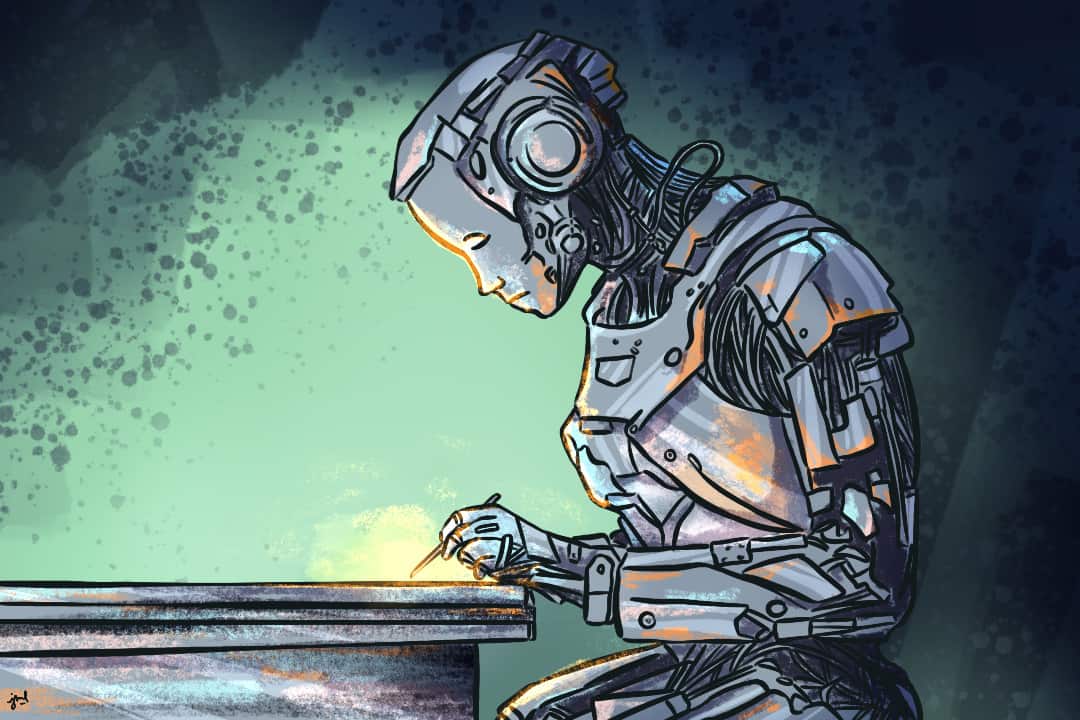Over the last few months, artificial intelligence (AI) art has exploded in popularity on social media, and with this have come many questions about the nature of art.
Art created by AI is generated using complex algorithms that are trained using photography and artwork to create new images based on the user’s input. They can also use written work to generate text. For example, one could ask for an image of a spaceship going to Mars in the style of a Renaissance painting, and the algorithm would use preexisting images of spaceships, as well as the style of a Renaissance painting, to create the desired images in seconds.
How AI art fits into the current artistic landscape is a complicated issue that doesn’t really have one right answer, so The Varsity spoke with some artists at U of T to get their opinions on AI art. Students pointed out several ethical and artistic issues with the creation of AI art, ultimately concluding that, despite its possible use as a tool for artists, there are too many cons for it to be a reliable tool in its current state.
So what is art?
When asked what they thought art was, students had a number of definitions. According to Vincent Quach, an English major with math and education minors at U of T, creating art is “to be inspired by something, and [to feel] your own life and experiences flow into whatever medium you choose.” Art is “the showcase of a human’s creative potential.”
Raquel Lewin, a classical civilizations student, said they believe art is all about creating with a purpose, noting that it’s “established from intent, rather than the end product.” Cynthia Nan, a criminology and psychology student, and Kenny Wang Dai, an international affairs specialist, both agreed that they see art as a fundamentally human endeavour, with Nan saying that the “act of creating art [is an] essential human desire and instinct,” and Wang Dai calling art “the expression of the human mind.”
So, can AI art be real art? All the students agreed that it cannot. As Wang Dai noted, “An artist and their creation have a very intimate relation, one that is much more personal than the relationship between the AI creation and its prompt maker.”
Despite this, Quach believes that AI could be a useful tool for artists if used properly. He uses the example of a YouTube channel by the name of Corridor, which used an AI generator to help them animate a parody of the movie Spider-Man: Into the Spider-Verse. They still needed to write, storyboard, edit, and direct the piece, despite using AI as a visual tool for the project.
Broad issues
Many students were deeply upset by the fact that AI generators train their AI with preexisting artwork and photography that they do not have permission to use. “AI should not be allowed to train on the art of creators who did not consent to their art being used,” Lewin said.
Recently, a group of artists sued some of the biggest companies that own AI art generators, including Stability AI Ltd., Midjourney Inc., and DeviantArt Inc. for using this stolen artwork. This is a move in the right direction to Quach, who believes that without “legal repercussions,” AI art could continue to evolve, and artists still wouldn’t get any compensation for the use of their art in improving the AI generators.
“If there were a warehouse of tech bros who’ve signed away their rights to their creation and are dutifully chugging out art to feed into the engines for other people to ceremoniously meld and blend together, then I would be more than ok with AI art,” Nan proposed jokingly.
Another issue that Quach, Wang Dai, and Lewin brought up was that AI generators could take away clients from human artists, who already struggle to gain respect from consumers and are often not well compensated for their labour. “Saturating the market with these quick fixes will only worsen the problem,” Lewin argued.
For Lewin and Nan, the underlying problem is capitalism. Lewin believes that, despite AI art’s possible pros, ultimately, “it will always be used as a tool to generate more profit while eliminating expenses.” For Nan, it’s an extreme example of capitalism that has no place in the art world: “Capitalism has reduced baseline human behaviour into skills and products that need to be streamlined and perfected.”
AI art seems pretty cool. It can generate images in an instant, and it can be a powerful tool for artists to create and get inspired. Unfortunately, there are also a lot of downsides: it relies on stolen artwork, takes jobs from artists, and eliminates the human element we consider integral to artistic endeavours. Overall, AI art poses too great a risk to the art community, and we should all make a conscious effort to support real artists by not using these generators.


